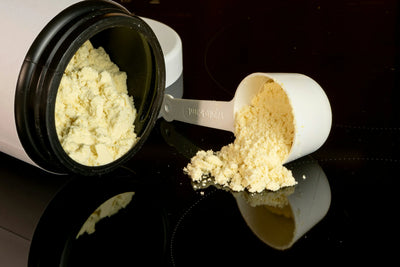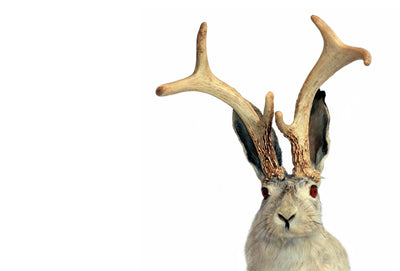Introduction
Honey, that sweet gift of nature, is not only a regular on the human table, but often leaves dog owners wondering: is this golden, natural sweetener safe for their furry companions? Can it bring health benefits to dogs? And how to feed it scientifically?
Can Dogs Have Honey? Safety, Benefits & Dosage Guide for Pet Owners
In this article, we will present a detailed guide for pet owners on the safety, health benefits, feeding dosage, and precautions to be taken so that both you and your dog can enjoy the sweetness and health of honey with peace of mind.

1. Safety of Honey for Dogs
Honey is known for its rich nutrient content, containing glucose, fructose, vitamins (such as B vitamins and vitamin C), and a variety of minerals (such as iron, calcium, zinc, and magnesium). These ingredients make honey a nutritious natural food. However, whether or not it is safe for dogs to consume honey needs to be judged on their specific circumstances.
(1) Overall safety
For healthy adult dogs, honey is usually safe to consume in moderation. The nutrients in honey can provide some health support for dogs, such as boosting immunity or improving digestion. However, honey is not suitable for all dogs, and dogs with certain special conditions need special attention.
(2) Dogs that are not suitable for honey
Puppies: Puppies have underdeveloped immune systems and weaker digestive systems. Raw honey may contain Clostridium botulinum spores, which are harmless to adult dogs but may cause food poisoning in puppies, which may even be life-threatening in severe cases.
Dogs with diabetes: Honey is high in sugar, and overconsumption may lead to blood sugar fluctuations, aggravating the condition of diabetic dogs and even causing other health problems.
Dogs with weakened immune systems: For dogs with weakened immune systems (e.g. older dogs or dogs with chronic illnesses), the potential bacteria in honey may increase the risk of infections, and therefore it is not recommended to feed it.
2. Health Benefits of Honey for Dogs
Consuming honey in moderation not only provides a sweet treat for your dog's taste buds, but may also add to their health. Here are a few potential benefits of honey for dogs:
(1) Boosts Immunity
Honey is rich in vitamins and minerals, and these micronutrients are highly beneficial to your dog's immune system. For example, vitamin C helps dogs relieve fatigue and build up resistance; iron helps red blood cell production and maintains blood health; and calcium and magnesium support the development of bones and teeth. Consuming honey in moderation over a long period of time may make your dog more energized and less sick.
(2) Promotes Digestive Health
The natural sugars and nutrients in honey gently stimulate your dog's intestinal motility and help improve digestion. Its natural antibacterial properties also balance intestinal microbes, reducing the incidence of indigestion or diarrhea. For dogs with occasional poor appetite, honey can also stimulate their appetite.
(3) Relieves Coughs and Throat Discomfort
Known for its natural anti-inflammatory and soothing properties, honey can also be helpful for your dog's respiratory health. If your dog is coughing due to a cold or upper respiratory infection, the right amount of honey can act as a throat loosener, soothing a sore throat and making your dog more comfortable.
(4) Other Potential Benefits
Anti-inflammatory and antioxidant: The flavonoids and phenolic acids contained in honey have anti-inflammatory and antioxidant properties that can help reduce skin inflammation and improve skin health in dogs, and may be especially helpful for dogs with allergic skin conditions.
Alcohol detoxification: Although dogs are rarely exposed to alcohol, studies have shown that honey accelerates alcohol metabolism by increasing the activity of the enzymes ethanol dehydrogenase and acetaldehyde dehydrogenase in the liver and gastric tissues. This may be protective for dogs who accidentally ingest alcohol-containing substances.
3. Dosage Guidelines for Feeding Honey
Although honey is good for dogs, excessive consumption may bring health risks, such as obesity, elevated blood sugar and even dental caries. Therefore, the dosage of honey must be strictly controlled and follow the principle of “moderation is king”.
(1) Specific Dosage Recommendations
According to the size of the dog, the recommended daily intake of honey is as follows:
Small dogs (e.g. Chihuahua, Pomeranian): no more than ½ teaspoon per day.
Medium-sized dogs (e.g. Corgi, Border Collie): not more than 1 teaspoon per day.
Large dogs (e.g. Golden Retriever, Labrador): not more than 1.5 teaspoons per day.
(2) Feeding Method
Direct feeding: Apply the right amount of honey on a small spoon and let your dog lick it. This is a good way to let your dog enjoy the flavor of honey directly.
Mixing into food: Mix honey with your dog's daily food, such as stirring it into dog food or homemade meal to increase the appeal of the food. However, you need to ensure that the total amount is kept within the recommended range.
Dilute and feed: If you are concerned that the honey is too thick, you can dilute it with a small amount of warm water and feed it to make it easier for your dog to digest.
4. Precautions for Feeding Honey
In order to ensure that dogs safely enjoy the benefits of honey, pet owners need to pay extra attention to the following points when feeding:
(1) Choose quality honey
Not all honey is suitable for dogs. Choose raw honey that is natural and free from additives. Avoid buying honey products that contain syrups, artificial sweeteners or other additives. Good quality honey is usually labeled as “100% pure honey” or “raw, untreated honey”.
(2) Observe your dog's reaction
When feeding honey for the first time, it is recommended to start with a small amount and closely observe your dog's reaction. If vomiting, diarrhea, itchy skin or any other symptoms occur, stop feeding immediately and contact your veterinarian. Some dogs may be allergic to honey and caution is key.
(3) Consult a professional veterinarian
Each dog's health condition is different and the suitability of honey needs to vary from dog to dog. Before starting to feed honey, it is advisable to consult a veterinarian to find out if your dog is suitable and if there are any potential health risks. Veterinarians can also provide personalized feeding advice based on your dog's size, age and health condition.
(4) Avoid frequent feeding
Although honey is good, it should not be used as your dog's daily food. Excessive sugar intake may lead to weight gain or dental problems. Honey is recommended as an occasional health supplement rather than a primary source of nutrition.
5. In conclusion: sweet love, scientific feeding
Honey, a natural treasure trove of nutrients, is usually safe for healthy adult dogs. Not only does it boost the immune system and improve digestion, but it also relieves coughs and improves skin health. However, honey is not a cure-all and should be avoided in puppies, diabetic dogs, or dogs with compromised immune systems. In order for your dog to safely enjoy the sweetness and benefits of honey, be sure to choose a good quality honey, keep the dosage under strict control, and consult your veterinarian for advice before feeding.
Through scientific feeding practices, honey can be a sweet bond between you and your dog. Whether it's the satisfaction of licking a small spoonful of honey or the energy that comes with good health, this little bit of sweetness can make your dog feel your heart and care. Next time you open a jar of honey, save a small portion of sweetness for your fur child, but don't forget - moderation is the right expression of love!
How to Use Honey for Dog Allergies: Natural Remedies & Success Stories
As beautiful as the spring flowers are, they can send our furry companions into pollen allergy trouble. Dogs sneeze, have itchy skin, and even scratch until they're red and swollen - symptoms that can be heartbreaking for pet owners. Luckily, nature has provided us with a sweet antidote - honey. Not only is local honey a delicious natural sweetener, but it may also be a secret weapon for relieving your dog's pollen allergies. In this article, we'll delve into how honey can help your dog cope with pollen allergies, sharing practical methods, real-life examples, and things to look out for, so that you and your pooch can be at ease during the flowering season.

Noora Daily Multi with 21 Beneficial Nutrients
1. The Science of Honey for Dog Pollen Allergy Relief
The magic of honey comes from its natural anti-inflammatory and antihistamine properties. Pollen allergies are a condition in which your dog's immune system overreacts to airborne pollen particles, resulting in symptoms such as sneezing, red eyes, and itchy skin. Local honey contains trace amounts of local pollen, which acts as a “micro-vaccine” to help the dog's immune system adapt to these allergens and reduce the allergic reaction through small doses and prolonged exposure. This mechanism is similar to allergen desensitization in humans and is gentle and natural.
In addition, honey is rich in antioxidants (e.g., flavonoids and phenolic acids), which are effective in reducing inflammation and soothing your dog's allergy-induced skin redness or respiratory discomfort. Choosing local honey is especially important because it contains pollen specific to your area and can be more targeted to help your dog fight local allergens.
2. How to Use Honey to Relieve Pollen Allergies in Dogs
Honey is simple and flexible and can be used in two ways, either orally or topically, to help relieve your dog's pollen allergy symptoms. Below are the specific operation guidelines:
(1) Oral honey: gentle internal conditioning
Oral honey is the main way to help dogs adapt to pollen allergy. By feeding local honey in moderate amounts daily, your dog's immune system can be gradually “desensitized” to pollen.
Dosage recommendations:
- Small dogs (e.g. Chihuahua, Yorkshire): 1/4 to 1/2 teaspoon per day, starting with 1/4 teaspoon and gradually increasing.
- Medium dogs (e.g. Corgi, Border Collie): 1/2 to 1 teaspoon daily.
- Large dogs (e.g. Golden Retriever, Labrador): 1 to 1.5 teaspoons per day.
Feeding Methods:
Direct Feeding: Apply an appropriate amount of honey to a small spoon and allow your dog to lick it. Many dogs will be attracted to the sweet aroma of honey and lick it.
MIX IN FOOD: Stir honey into dog food, homemade meals or a small amount of warm water to increase the appeal of the food while making it easier to digest.
Frequency: Once a day. It is recommended to feed continuously for 4-8 weeks during pollen season (e.g. spring or fall) to observe the effect.

(2) Topical application: Soothe itchy skin
Pollen allergies often make your dog's skin itchy, even scratching until it is red and swollen. The anti-inflammatory and antibacterial properties of honey make it a natural skin soother.
Directions:
Mix pure natural honey with warm water in a 1:1 ratio to make a thin solution.
Dip a clean cotton ball or gauze into the solution and gently apply to itchy or red skin areas.
Allow the honey to remain on the skin for 10-15 minutes before rinsing gently with lukewarm water to prevent the dog from licking too much.
Scenario: Suitable for localized skin redness, swelling, eczema or minor scratches caused by pollen allergy. Serious skin problems need to consult a veterinarian.
(3) Choosing the right honey
It is important to choose local, raw and untreated honey. Local honey retains the pollen content of the area, while raw, unprocessed honey contains more active nutrients such as enzymes and antioxidants. When purchasing, check the label to see if it states “100% pure honey” or “raw honey” to avoid inferior products with syrup or artificial additives.
3. Real Life Case: the Sweet Miracle of Honey
The miraculous effects of honey have been proven in many dogs. Here are two real-life examples that show how local honey has helped dogs regain their comfort:
Max's New Springtime Life
Max is an active Labrador who starts sneezing, has red eyes and scratches his itchy skin every time spring pollen drifts in. Traditional anti-allergy medication provided temporary relief, but the side effects worried his owner. On the advice of her veterinarian, Max's owner started adding 1 teaspoon of local honey to her food every day. After three weeks, Max's sneezing decreased significantly and the redness and swelling of his skin gradually subsided. Now, during pollen season, Max's owner prepares local honey in advance to help him get through the spring.
Bella's skin resurfacing
Bella, a corgi, has long suffered from itchy skin caused by pollen allergy, and scratching led to red and swollen skin on her abdomen. The owner tried various ointments, but the effect was limited. On the recommendation of a friend, Bella's owner started applying diluted honey to her itchy skin and feeding her half a teaspoon of local honey every day. After two weeks, Bella's skin condition improved dramatically, the itching subsided and her coat became shinier. The owner exclaimed, “The honey was like a dose of natural energy for Bella's skin and immune system!”
4. Precautions for Feeding Honey
Even though honey is a natural remedy, caution is needed when using it to ensure your dog's safety and health:
Consulting your veterinarian is the first step
Every dog is different and the suitability of honey needs to be professionally assessed. Before starting to feed or apply honey, be sure to consult your veterinarian about your dog's suitability for this treatment, especially if he or she has a history of chronic medical conditions (such as diabetes) or allergies.
Avoid overfeeding
While honey is good, it is high in sugar, and overdosing may cause your dog to gain weight, increase blood sugar, and even cause dental problems. Follow the recommended dosage closely and use honey as a complementary therapy, not as a primary treatment.
Observe the reaction closely
After feeding honey for the first time, watch your dog for any adverse reactions such as vomiting, diarrhea, increased redness of the skin or abnormal behavior. If any discomfort occurs, discontinue use immediately and contact your veterinarian. A few dogs may be allergic to the honey itself; caution is advised.
Wash the area regularly
If you use honey to apply to the skin, you need to wash it promptly after application to avoid residual honey attracting bacteria or causing your dog to lick too much.
5. Conclusion: A Sweet Remedy to Brighten Your Dog's Pollen Season
As a natural anti-inflammatory and antihistamine, local honey offers a gentle yet effective way to relieve your dog's pollen allergies. Through small, long-term oral administration, the dog's immune system can gradually adapt to the pollen and reduce the allergic reaction; topical application can directly soothe the itchy skin and bring comfort back to the dog. Real-life examples prove that honey is not only a sweet treat, but may also be a natural ally in your dog's fight against pollen allergies.
However, sweet remedies require scientific guidance. Choosing high quality local raw honey, strictly controlling the dosage and using it under the guidance of a veterinarian will ensure safety and effectiveness. Pollen season is no longer a time of worry for your dog, but a sweet time for you and your pooch to enjoy nature's bounty together. Let's use this golden tenderness to add to your dog's health and let them run free and carefree in the spring breeze!
Local Honey for Dog Allergies: Does It Work? Expert Insights & FAQs
During pollen season, many dogs are plagued by allergies such as sneezing and itchy skin, leaving pet owners distraught. In recent years, local honey has been gaining attention as a natural remedy, and many people believe it can help dogs relieve their pollen allergies. But is this sweet remedy really effective? What is the science behind it? In this article, we'll look at the principles of local honey, expert opinion, usage and FAQs to provide you with a scientific and compassionate guide to help you and your dog have a more comfortable pollen season.
1. The Principles of Local Honey for Dog Pollen Allergy Relief
The reason why local honey is believed to be able to alleviate pollen allergies in dogs is due to its unique composition - trace amounts of local pollen. These pollens act as a “natural vaccine”, helping the dog's immune system to gradually adapt to common allergens in the environment by ingesting them in small doses over a long period of time, thus alleviating symptoms such as sneezing, tearing or itching of the skin. This mechanism is similar to human allergen desensitization therapy, which is gentle and gradual.
In addition, honey contains natural anti-inflammatory and antihistamine components, such as flavonoids and phenolic acids, which can ease the inflammatory response triggered by allergies and soothe your dog's discomfort. Local honey, in particular, contains pollen specific to your area, which allows it to more precisely target local allergens and provide personalized “immune training” for your dog.
2. What the Experts Say: Supporting and Questioning at the Same Time
Does local honey really provide relief from dog pollen allergies? Experts have both supportive and reserved views. The following is an in-depth analysis of its effects:
(1) Supporting Views
Desensitizing effect: The trace pollen in local honey can act as a natural allergen and gradually enhance the dog's tolerance to pollen, similar to the principle of immunotherapy. Many pet owners have fed back that their dogs' allergy symptoms have been reduced after feeding local honey for a long period of time.
Natural anti-inflammatory: The anti-inflammatory and antihistamine properties of honey can relieve red, swollen, itchy skin or respiratory discomfort, providing a gentle soothing effect for dogs.
(2) Skeptical views
Insufficient scientific evidence: Despite many pet owner success stories, there is a lack of large-scale, rigorous scientific studies to confirm the efficacy of local honey for dog pollen allergies. Experts caution that anecdotal evidence, while uplifting, is not a complete substitute for scientific verification.
Individual differences are evident: every dog has a different body type and allergic reaction. Some dogs may improve their symptoms within a few weeks, while others may show no change at all, or even develop an allergy to the honey itself.
Experts recommend using local honey as a complementary therapy, not a primary treatment, and consulting with your veterinarian before use to ensure both science and safety.
3. How to Use Local Honey Properly
If you decide to try local honey for your dog's pollen allergy relief, a scientific approach to its use is crucial. The following are specific guidelines:
(1) Choosing the right honey
Prioritize local raw honey: choose natural, raw, untreated honey produced in your area. This type of honey retains more pollen and active nutrients (such as enzymes and antioxidants) and is more effective in relieving local pollen allergies.
Avoid processed honey: Processed honey commonly found in supermarkets may have been heat-treated or filtered to remove pollen and other beneficial ingredients, making it much less effective. When buying, check the label for “100% pure honey” or “raw honey”.
(2) Dosage Recommendations
Depending on the size of the dog, the recommended daily dosage is as follows:
Small dogs (e.g. Chihuahua, Pomeranian): 1/4 teaspoon per day, can be gradually increased to 1/2 teaspoon.
Medium-sized dogs (e.g. Corgi, Border Collie): 1/2 to 1 teaspoon daily.
Large dogs (e.g. Golden Retriever, Labrador): 1 to 2 teaspoons per day.
Timing: It is recommended to start feeding 3-4 weeks before the pollen season begins to give your dog's immune system time to adapt. Continue feeding for 4-8 weeks to observe the effect.
(3) Feeding Method
Direct feeding: Apply appropriate amount of honey on a small spoon and let your dog lick it. The sweet aroma of honey usually attracts dogs and the feeding process is easy and enjoyable.
Mixing into food: Stir honey into dog food, homemade meal or a small amount of warm water to increase the attractiveness of the food and at the same time facilitate digestion.
Frequency: 1 time per day. It is recommended to feed at a regular time, such as in the morning or at dinner.
4. Precautions for Feeding Local Honey
Despite the great potential of local honey, caution should be exercised when using it to ensure your dog's safety:
Consult your veterinarian: Every dog has a different health condition and the suitability of honey requires professional judgment. Especially for dogs with a history of diabetes, obesity or allergies, it is important to use it under the guidance of a veterinarian.
Avoid overdose: Honey is high in sugar and overdose may lead to weight gain, blood sugar fluctuations or dental problems. Strictly follow the recommended dosage and never use honey as a daily staple.

Observe reactions: After the first feeding, closely monitor your dog for abnormal reactions such as vomiting, diarrhea, and increased skin redness. If there is any discomfort, stop feeding immediately and contact your veterinarian.
Unsuitable for Puppies: Puppies have immature immune systems and the botulism spores that may be contained in raw honey may pose a health risk, so it is not recommended to feed it to puppies under 1 year old.
5. Frequently Asked Questions
Does local honey really provide relief from pollen allergies in dogs?
Local honey may have a relieving effect on the symptoms of pollen allergy in some dogs, especially through the mechanism of immune desensitization. However, the effect varies with individual differences and there is a lack of sufficient scientific evidence. It is recommended as an adjunctive therapy, in conjunction with a treatment program recommended by your veterinarian.
Which local honey is best for dogs?
Choose local, raw, unprocessed honey, preferably labeled “100% Pure Honey” or “Raw Honey” to ensure pollen and nutrients are retained.
How long does it take to see results?
Some pet owners have reported that their dogs' allergy symptoms (e.g. sneezing, itching) may improve after 4-8 weeks of continuous feeding. However, the effect varies depending on the dog's body type.
Can honey replace antihistamines?
No. Honey should only be used as a supplement and cannot replace antihistamines or other specialized allergy treatments. Severe allergies require prompt medical attention.
Can honey cause obesity or diabetes?
Honey is high in sugar and overfeeding may increase the risk of obesity or diabetes. Strictly control the dosage and monitor your dog's weight and health regularly.
Can honey cause dental caries in dogs?
The sugar in honey may increase the risk of dental caries. After feeding, it is recommended to wipe your dog's mouth with water or perform regular dental cleaning.
With its natural anti-inflammatory and desensitizing properties, local honey offers a gentle adjunctive therapy for pollen allergies in dogs. Despite the success stories shared by many pet owners, scientific validation of its efficacy is still lacking. Experts suggest that when trying local honey, pet owners should choose high quality raw honey, strictly control the dosage, and be under the guidance of a veterinarian to ensure safety and effectiveness.
Pollen season doesn't have to be a “tough season” for dogs. Through scientific feeding practices, local honey can be a great allergy fighter for you and your dog. Whether it's the satisfaction of licking a spoonful of honey, or the joy of running around after the symptoms have subsided, it's a sweet gesture that carries a lot of love and care for your dog. Let's add a dash of sweet hope to your dog's pollen season with the gentleness of science!





